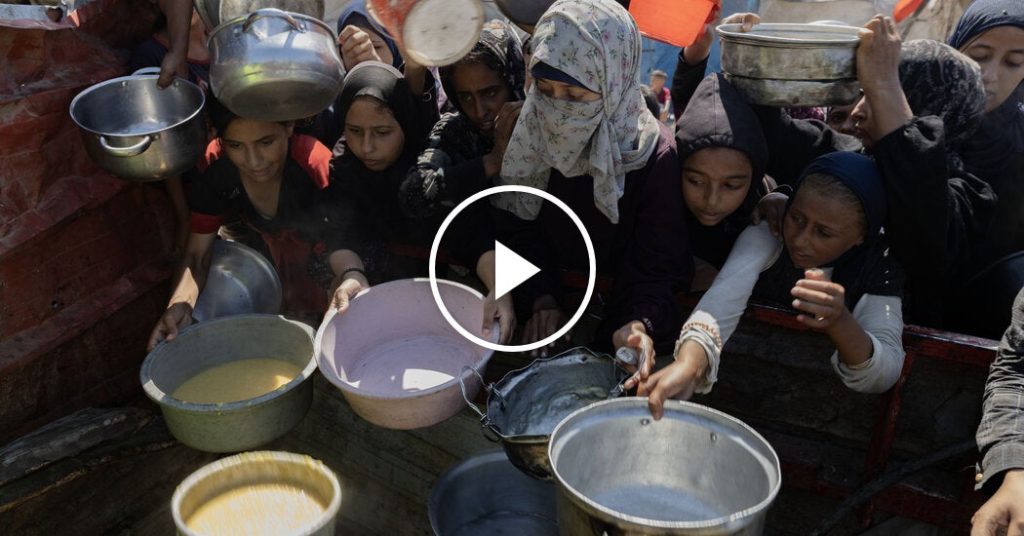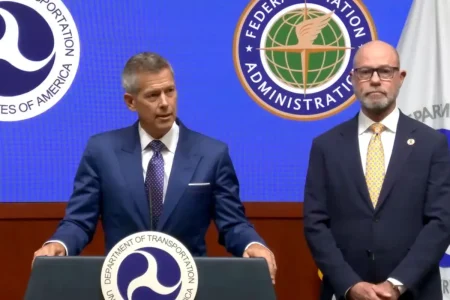Famine in Gaza City Now Official, U.N.-Backed Experts Confirm
Catastrophic Hunger Crisis Engulfs Northern Gaza as War Continues
By James Mitchell, Senior International Correspondent
August 22, 2025
In a grim milestone that humanitarian experts have feared for months, Gaza City and its surrounding areas have officially crossed the threshold into famine, according to authoritative findings released Thursday by a specialized hunger monitoring group. The classification, which comes after months of increasingly urgent warnings, confirms that at least 500,000 Palestinians are now experiencing the most severe level of food insecurity recognized in global disaster metrics.
The Integrated Food Security Phase Classification (IPC), the U.N.-backed consortium whose assessments form the technical backbone for international humanitarian response planning, determined that conditions in northern Gaza have deteriorated past critical emergency levels to meet the formal classification of famine. This designation, rarely applied globally, requires meeting specific thresholds for malnutrition, mortality, and food access that signify a humanitarian catastrophe of the highest order.
Behind the Designation: Understanding What Constitutes a Famine
The famine declaration represents more than just terminology—it reflects a catastrophic convergence of circumstances where significant portions of the population lack access to minimum food requirements, acute malnutrition rates exceed 30 percent, and mortality rates surpass two deaths per 10,000 people daily due to starvation or related causes. Humanitarian officials note that the classification comes only after rigorous data collection and analysis, meaning actual conditions on the ground likely deteriorated to famine levels weeks before formal confirmation was possible.
“What we’re seeing in northern Gaza represents a complete collapse of food systems and access,” explained Dr. Helena Reeves, a food security analyst who has worked with multiple U.N. agencies in conflict zones. “When we declare a famine, we’re acknowledging not just widespread hunger, but a systematic failure of the most basic mechanisms that keep people alive. Markets aren’t functioning, household reserves are depleted, and humanitarian assistance cannot reach those in need at the scale required.”
Compounding Factors Creating “Perfect Storm” for Humanitarian Disaster
Multiple compounding factors have contributed to the famine conditions, according to experts consulted for this report. The ongoing military operations have severely restricted humanitarian access, with aid convoys frequently unable to reach northern Gaza for weeks at a time. Critical infrastructure damage has compromised water systems, sanitation facilities, and electricity networks necessary for food preparation and storage. Agricultural areas have been rendered unusable due to contamination or destruction, eliminating local food production capacity that previously supplemented imported goods.
Perhaps most critically, economic activity has essentially ceased, leaving families without income to purchase what limited food supplies occasionally appear in markets. When food does become available, hyperinflation has driven prices beyond what most households can afford. A single kilogram of flour, when available, now costs the equivalent of what many families previously earned in a week, according to multiple humanitarian organization reports. Physicians working in northern Gaza hospitals report treating increasing numbers of patients suffering from severe acute malnutrition, particularly among children under five, pregnant women, and the elderly—groups most vulnerable to the physiological impacts of prolonged food deprivation.
International Response and Diplomatic Fallout
The formal famine declaration has intensified diplomatic pressure on all parties to the conflict, with U.N. Secretary-General Antonio Guterres calling an emergency session of the Security Council. “This famine is entirely human-made and therefore entirely preventable,” Guterres stated in remarks delivered Thursday evening. “The international community cannot claim ignorance. We have been warning of this outcome for months, and now we must confront the reality that our collective actions have been insufficient to prevent it.”
Several major humanitarian organizations have issued joint statements calling for immediate measures to address the crisis, including guaranteed humanitarian corridors, suspended military operations near critical infrastructure, and emergency funding to scale up relief operations. The World Food Programme announced plans to attempt high-volume airdrops of specialized nutritional supplements for children, though officials acknowledged such measures remain inadequate compared to the sustained ground access needed to reverse famine conditions. Meanwhile, diplomatic tensions have escalated as various nations have attributed responsibility for the crisis differently, reflecting the broader geopolitical divisions that have characterized international response to the conflict.
Human Cost: Voices from Within the Crisis Zone
Reports from medical professionals still operating within northern Gaza paint a devastating picture of the human toll. Dr. Maryam Khalidi, one of the few pediatricians still working in Gaza City’s largest remaining functional hospital, described treating children whose bodies have begun consuming muscle tissue after depleting fat reserves. “We’re seeing complications we typically only read about in medical textbooks on famine,” she explained via a satellite phone interview. “Organ systems beginning to shut down, immune function so compromised that minor infections become life-threatening, and cognitive impacts that may be permanent even if these children eventually regain access to adequate nutrition.”
Families trapped in the famine zone report increasingly desperate coping mechanisms. “People are grinding animal feed into flour, boiling leaves and grass, even consuming items never meant for human consumption,” reported Samir Haddad, a local aid worker who has remained in northern Gaza throughout the conflict. “When you see mothers diluting what little formula they have to make it last longer, knowing it’s not enough for their babies but having no alternatives, you understand we’ve crossed into territory beyond normal human experience.” The psychological impact compounds the physical suffering, with mental health professionals warning of long-term trauma that will affect survivors long after food access is restored.
Historical Context and Path Forward
The Gaza famine marks the first officially declared famine in the Middle East region in decades, though several “pre-famine” or “famine-like” conditions have been documented in Yemen and parts of Syria during their respective conflicts. Historically, famines associated with conflict have proven particularly deadly and difficult to resolve, as they typically require not just food aid but comprehensive political solutions that address the underlying causes of food access disruption.
Humanitarian experts emphasize that reversing famine conditions requires immediate, unimpeded humanitarian access at scale, restoration of basic services including water and electricity, and economic interventions to make food affordable again. “Even if a ceasefire were implemented tomorrow, the nutritional crisis would continue for months,” noted Dr. Ibrahim Al-Najjar, a public health specialist with experience in multiple Middle Eastern humanitarian emergencies. “The human body, especially developing bodies of children, doesn’t simply bounce back from prolonged starvation. Recovery requires specialized nutritional support, medical intervention for complications, and sustained food security.” As international diplomatic efforts intensify in response to the famine designation, the clock continues ticking for those trapped in what has become one of the most severe humanitarian crises of the 21st century.
The formal classification of famine in Gaza City represents not just a statistical threshold crossed but a profound human tragedy unfolding in real time. As the international community grapples with how to respond effectively, half a million people continue to endure conditions that humanitarian law was specifically designed to prevent. The coming weeks will prove critical in determining whether this famine becomes a brief but tragic chapter in the region’s history or expands into an even larger catastrophe with generational consequences.










